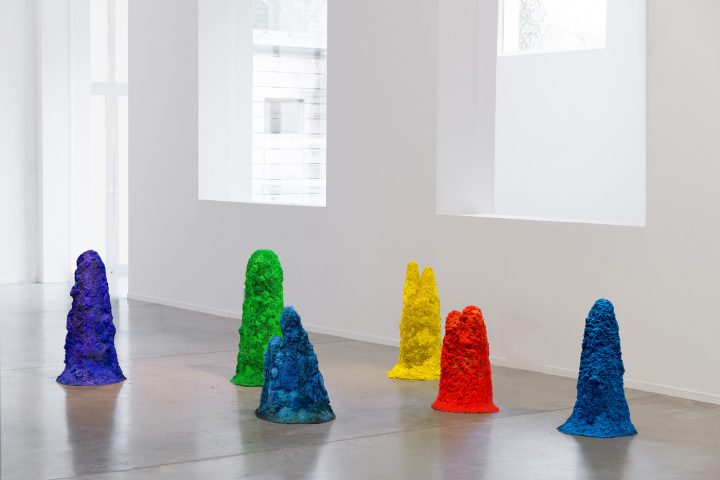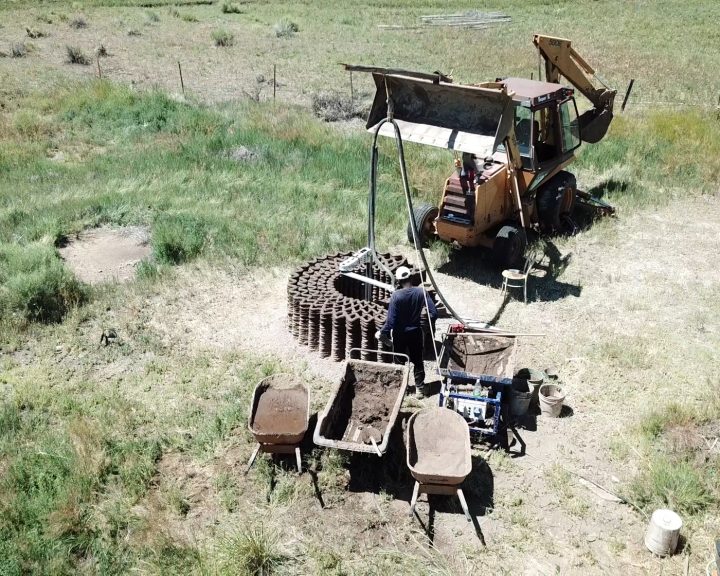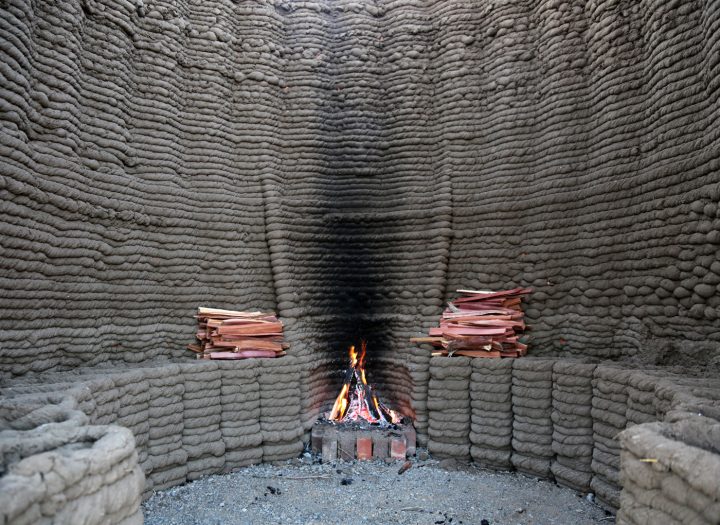
From mythic navigation to generating new built and ecological environments, this year’s cohort seems prepared to take on the future.
By Sarah Rose Sharp on August 13, 2020
Today, the Art + Technology Lab at the Los Angeles County Museum of Art (LACMA) announces the 2020 recipients of its annual Art + Technology Grants. The grant awards up to $50,000, including monetary and in-kind support, for projects that engage emerging technologies. The Art + Technology Grant began in 2013 and was first awarded in 2014; past grantees include Taeyoon Choi and E Roon Kang, Annina Rüst, Rashaad Newsome, Eun Young Park, and Tom Sachs. So far, the lab has supported 35 projects from a host of international artists.
LACMA issued the 2020 Request for Proposals in December 2019, and chose four recipients from some 600 submissions. This year’s grant projects (shared exclusively with Hyperallergic) seem to emphasize 3D printing, and will work with reconstituted materials, robotics and crowdsourcing, Indigenous navigation techniques, as well as natural building practices and additive manufacturing. The 2020 awardees are:

Matthew Angelo Harrison
Harrison’s project, The Consequence of Platforms, has been ongoing for several years, with iterations and extensions popping up in places like the University of Michigan’s Institute for the Humanities Gallery and the Museum of Contemporary Art Detroit (MOCAD). For his LACMA iteration, Harrison plans to collaborate with scientists on a material that can be reconstituted for the 3D printing of objects. Specifically, Harrison has been replicating artifacts with obscure relation to the African diaspora — roots that were historically obscured by colonialism and enslavement, and continue to be complicated by tourism culture that values “authenticity” in ways that drive performative identity both within Africa and abroad. As always, Harrison continues to seek opportunities to further compound these questions of cultural provenance, inheritance, and identity.

Agnieszka Kurant
Kurant’s work seems to display an overarching interest in the intersection of natural engineering and machine will. The artist plans to develop “a group of shape-shifting sculptural organisms, algorithmically controlled by a collective intelligence of users from around the world.”
“Tamagotchis, developed in Japan in 1996, are egg-shaped digital toys imitating live organisms, which must be regularly nourished, petted, and walked,” wrote the artist in an email to Hyperallergic. “There have been 76 million Tamagotchis sold to date — a nation’s worth. And I imagined what would happen if all these 76 million people instead took care or animated one single tamagotchi.”
Kurant’s project is aptly named Artificial Society / Collective Tamagotchi, and like its eponymous inspiration, its ecosystem will depend on the data and live inputs from participants. Kurant’s intention is to harness the “concealed exploitation on our social energies or social capital” into caring for the collective Tamagotchi — which she also sees as a metaphor for the Earth (the real Tamagotchi in our care). Sort of like having a pet, if you were, say, Dr. Manhattan.

Kyle McDonald, Daisy Mahaina, and Dr. Marianne George
Artist-programmer Kyle McDonald, Daisy Mahaina from the Vaka Valo Association (a community-led Pacific Islander traditions society, based in the Solomon Islands), and cultural anthropologist and sailor Dr. Marianne George are undertaking an examination of natural phenomena with supernatural undertones. Their project will use new technologies to document ancient Polynesian navigation techniques, including “Te Lapa”: a faint burst of light that emanates from land, but has never been recorded.

The project aims to build a custom camera rig that can sense this very faint light, and capture the first-ever video of Te Lapa. Documentation resulting from the project will serve as a pedagogical tool. McDonald, Mahaina, and George’s project is called Te Lapa: Polynesian Navigation Illuminated.

Virginia San Fratello and Ronald Rael
For their project, MUD Frontiers / Zoquetes Fronterizos, this team will reexamine Indigenous mud-based building materials through 21st-century robotics to contemplate the past and future of Pueblo de Los Ángeles, which has historically belonged to the Chumash and Tongva, Spain, Mexico, and now the United States. San Fratello and Rael will “create proto-architectures that connect building traditions at opposing ends of a technological spectrum.” The project involves large-scale architectural work with 3D printing, that simultaneously examines the past while presaging potential building techniques of the future, in a sophisticated blend of cultural anthropology and speculative architecture.

In addition to these new grantees, the Art + Technology Lab announced the inclusion of YouTube Learning to its advisory board. The lab and its artist projects enjoy the support of this board, which includes innovators across a variety of technological industries. Advisory board members lend their experience and expertise and help drive the conversation around how museums will use new technology.
From mythic navigation to reconstructed histories, to generating new built and ecological environments, the LACMA 2020 Art + Technology cohort seems prepared to take on the future. With this much innovation, applicants might have to find an additional dimension beyond 3D to tackle next year!
